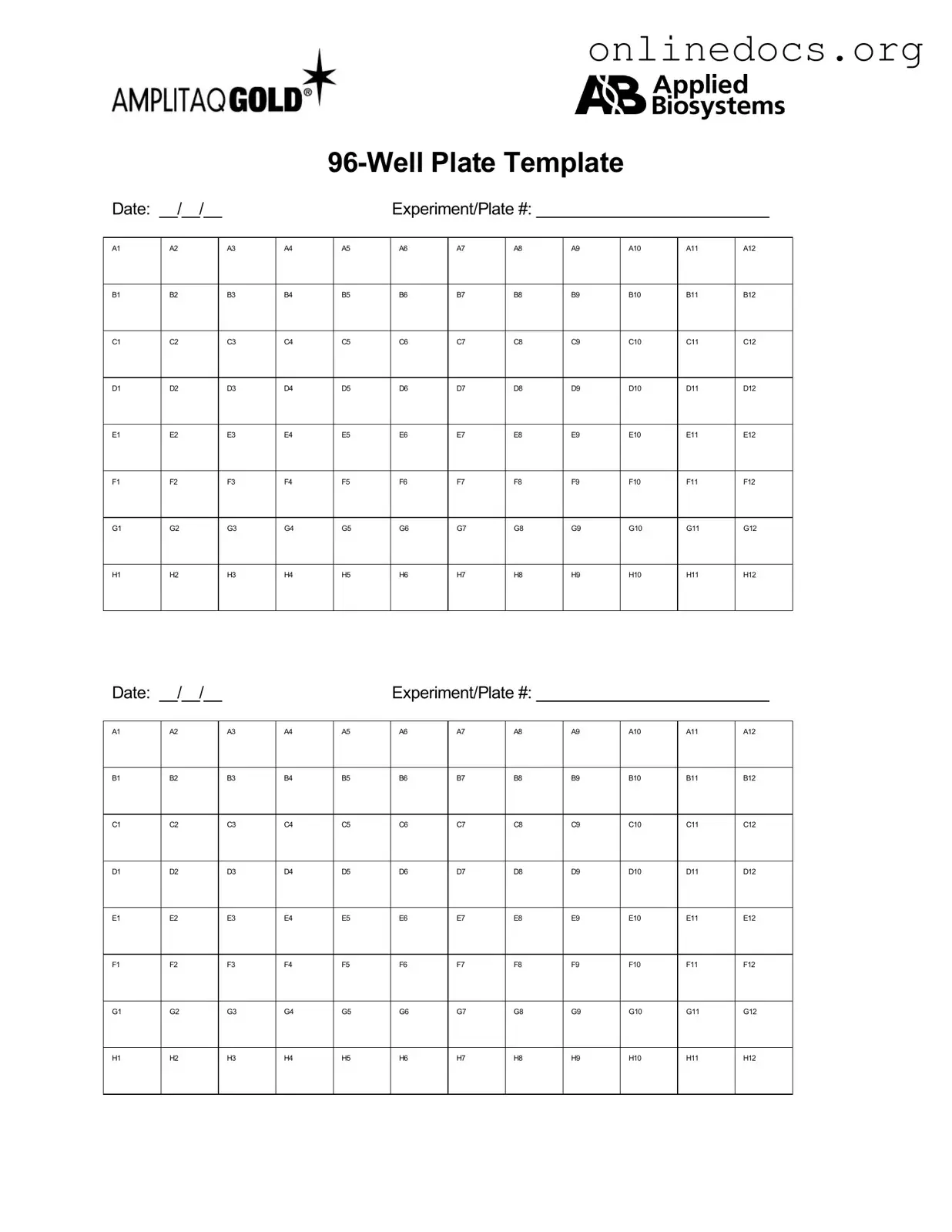Completing the 96 Well form can be a straightforward task, yet many individuals encounter common pitfalls that can lead to delays or complications. One frequent mistake is not providing complete information. Each section of the form is designed to capture specific details, and leaving any part blank can result in processing issues. It is essential to ensure that every required field is filled out accurately.
Another common error is misplacing or incorrectly entering contact information. This information is crucial for communication regarding the form’s processing. Double-checking phone numbers and email addresses can prevent misunderstandings and ensure timely responses.
Additionally, people often overlook the importance of using clear and legible handwriting. If the form is handwritten, unclear writing can lead to misinterpretation of the information provided. Consider using print letters to enhance clarity and avoid any confusion.
Some individuals may also fail to read the instructions thoroughly. Each form comes with specific guidelines that help in filling it out correctly. Skipping this step can lead to errors that could have been easily avoided. Taking the time to read the instructions can save significant effort later on.
Another mistake is neglecting to review the form before submission. A final check can reveal overlooked errors or missing information. This simple step can make a substantial difference in the form's acceptance and processing time.
People sometimes forget to sign and date the form. An unsigned form may be considered incomplete and could result in delays. Ensuring that all necessary signatures are provided is a critical step in the process.
Moreover, individuals might not keep a copy of the completed form for their records. Retaining a copy can be invaluable for future reference or if any issues arise during processing. It serves as a safeguard and can provide peace of mind.
Some may also submit the form without verifying the deadline. Each submission has specific timeframes that must be adhered to. Missing a deadline can lead to complications or the need to resubmit, which can be frustrating.
Lastly, failing to follow up after submission is a mistake that can lead to uncertainty. Checking on the status of the form ensures that it is being processed and allows for any necessary corrections to be made promptly.
